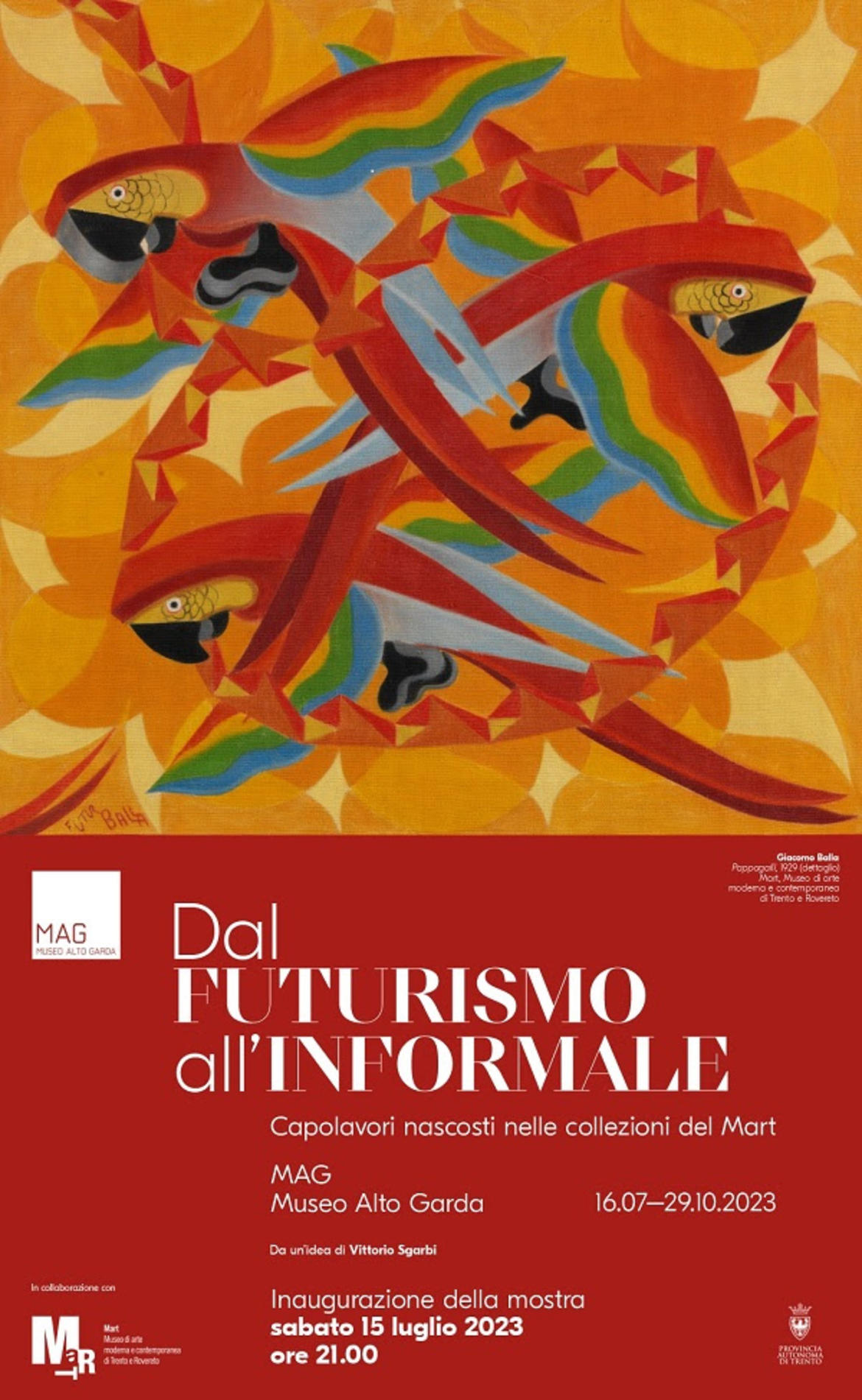From Futurism to Informalism
Hidden Masterpieces in the Mart's Collections

Opening on Saturday 15 July at 21.00, the exhibition is the result of a virtuous collaboration with the MART, the Trento and Rovereto Museum of Modern and Contemporary Art.
Based on an idea by Vittorio Sgarbi, president of MAG and Mart, and curated by Alessandra Tiddia, art historian and curator at the Mart, the exhibition is conceived as a fascinating journey through the 20th century Italian art. It is an itinerary that explores and recounts the conception and experimentation of new languages and expressiveness: the forty or so works in the exhibition, consisting of paintings, sculptures and installations, are in fact representative of the new imagery of the so called 'short century'.
The initial section is a homage to Futurism: in the first room, in fact, we find important works by famous artists belonging to this avant-garde, such as Rissa rustica (1936), Gallo (c. 1937-1938) and Il legnaiolo (19326-1931) by Fortunato Depero in dialogue with Pappagalli (1929) by Giacomo Balla and the works of Gino Severini. This first part brings to mind the urgency of these artists in conceiving a different everyday aesthetic, rethinking lines, forms, content so as to revolutionise the aesthetic ideal of the time and carry out a Futurist reconstruction of the universe. Alongside these works are those of Tullio Crali and Mino Delle Site, futurist exponents of so-called 'aeropittura' ("aeropainting") who intended to convey the sensations and emotions felt during a flight, so as to experience a dizzying vision of the landscape.
On display are also Massimo Campigli, Carlo Carrà, Felice Casorati, Giorgio de Chirico and Giorgio Morandi, artists who worked at the turn of the two world wars and who distinguished themselves both for a need to recover stable references to contrast the disasters caused by the conflicts, and for a recovery of the classical tradition through a look towards antiquity. In this sense, Carrà's works such as Natura morta con pesci (1954) and Venezia e la Salute (1938) are emblematic, distinguished by their simplified forms and synthetic figures, as well as Trovatore (1950), Piazza d'Italia-Pomeriggio d'Arianna (1972) and Figura di Giovane con oggetti metafisici (1969) by de Chirico, which reinterpret classicism by contemplating the ruin and giving it a metaphysical and enigmatic sense.
Entering the exhibition, you'll discover works by Renato Guttuso such as Donna alla finestra (1942), Boogie-woogie (1953) and Emilio Vedova such as Ciclo 62.B.9 (1962) and Uomo e macchina(1949): both Guttuso and Campigli, anti-fascists and members of the Italian Communist Party, experiment with new languages and expressiveness. The journey continues with exponents of Abstractionism such as Carlo Belli, Fausto Melotti and Mario Radice.
We then move on to meet artists who have dedicated their productions to reflecting on the sign, the symbol, the referentiality of meanings and signifiers: these are Giuseppe Capogrossi, Gastone Novelli and Carla Accardi. By the latter, not only an artist but also an exponent of Italian neo-feminism, Lago artificiale n.2 (1962) and Integrazione (1957) are on display.
Three extraordinary names close the exhibition: Alberto Burri, Antoni Tàpies and Lucio Fontana. Figure. Paisaje en gris (1956) by Tàpies, Sacco combustione (1952-1958) and Bianco Plastica BL1 (1964) by Burri delegate the intrinsic meaning of art to matter, encounter the unexplored material considered poorer than the traditional, such as sand, stones and shards used in their works, and experiment with a more instinctual gestuality.
Even more subversive appears the action of Fontana, the founder of Spatialism, one of the neo-avant-gardes of the second half of the 20th century. Through holes and cuts, concentrated and meditated, his works seem to transcend boundaries and project into infinity.
These are some of the protagonists of this highly appealing exhibition, capable of capturing the attention of both the Italian and foreign tourist public who visit Lake Garda in the summer, and of art enthusiasts and connoisseurs who have the opportunity to admire the Mart's important masterpieces in the evocative setting of the Riva del Garda Museum. These works are the result of a targeted acquisition strategy, and constitute one of the most extensive and significant collections of modern and contemporary art of the whole Europe.

